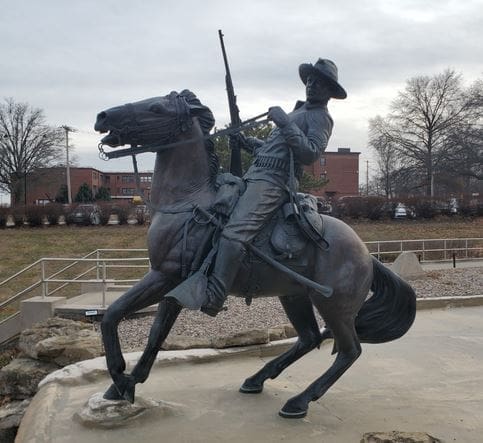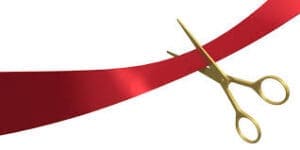By Ron Wilson, director of the Huck Boyd National Institute for Rural Development at Kansas State University
“Buffalo soldiers” is a term to describe the African-American members of the Army who served with distinction in the 1800s. Their service eventually paved the way for an integrated military and society – and it all began in rural Kansas.
In 1827, U.S. Army Colonel (later Brigadier General) Henry Leavenworth received orders to survey sites along the Missouri River for a military post. After study, he recommended a site on the west bluffs above the Missouri River. This became Fort Leavenworth.
A civilian settlement grew around the fort. In 1854, the City of Leavenworth became the first city in Kansas territory to be officially organized. Today, Leavenworth proudly claims the title of First City of Kansas.
The first Town Association was formed on June 9, 1854. Town lots were sold on October 9. By New Year’s Day, 1855, Leavenworth was a rural community of about 200 inhabitants. Now, that’s rural.
The population boomed. By autumn 1856, there were 1,200 citizens. By 1861, the population was 10,000. By 1870, it was the 82nd largest city in the nation. Leavenworth’s current population is 37,176.
According to Kansapedia, Fort Leavenworth’s primary role was to protect settlers and merchants traveling westward and to maintain peace with the Native American Indian tribes, and then to keep the peace among the factions of Bleeding Kansas.
During the Civil War, so-called colored troops served in the Union Army. In 1866 the United States government specifically authorized the formation of four African American regiments. The first of these included the 10th Cavalry Regiment, formed at Fort Leavenworth on September 21, 1866.
These and other African-American soldiers would become known as Buffalo Soldiers. The term was given to them by the Native American Indians, perhaps because the soldiers’ dark, curly hair resembled the hair of the buffalo; or the buffalo coats worn by the soldiers in winter; or the strength and tenacity demonstrated by these soldiers.
Eventually, the image of a buffalo became part of the 10th Cavalry’s regimental crest. According to the Smithsonian’s National Museum of African-American History and Culture, 18 buffalo soldiers were awarded the Medal of Honor.
In 1881 at Fort Leavenworth, General William T. Sherman established the School of Application for Cavalry and Infantry – later known as the Infantry and Cavalry School. This developed into what is essentially a high-level military officers graduate school, now known as the Command and General Staff College.
Along with other components, this makes up the Combined Arms Center, which is the primary reason that Fort Leavenworth is considered to be the intellectual center of the Army today.
Who has attended the Command and General Staff College? Such military leaders as Dwight D. Eisenhower, George C. Marshall, Omar Bradley, Douglas MacArthur, George Patton, and many more. very modern five-star general has attended the Command and General Staff College at Fort Leavenworth.
Another of those who attended the Command and General Staff College was a young officer named Colin Powell. This was the same Colin Powell who would become Chairman of the Joint Chiefs of Staff and who was appointed by President Bush as Secretary of State – the first African-American to serve in that capacity.
As Chairman of the Joint Chiefs, Colin Powell wanted to honor the legacy of the buffalo soldiers at Fort Leavenworth. Black sculptor Eddie Dixon, an Army veteran, was commissioned to develop a statue. He created a 17-foot-tall sculpture of a mounted buffalo soldier on a native limestone base. In 1992, the sculpture was unveiled on post at Fort Leavenworth by Powell.
Junction City also has a Buffalo Soldier Memorial sculpture. It stands at 18th Street and Buffalo Soldier Drive and depicts a buffalo soldier standing by his horse. According to the Geary County Convention and Visitors Bureau, the artist took composite pictures of the five remaining Buffalo Soldiers who were living in the area at the time and included their features in the soldier sculpture.
Buffalo soldiers played a key role, in the Army and in society. For their service and their legacy, we salute them.
Audio and text files of Kansas Profiles are available at http://www.kansasprofile.com. For more information about the Huck Boyd Institute, interested persons can visit http://www.huckboydinstitute.org.













